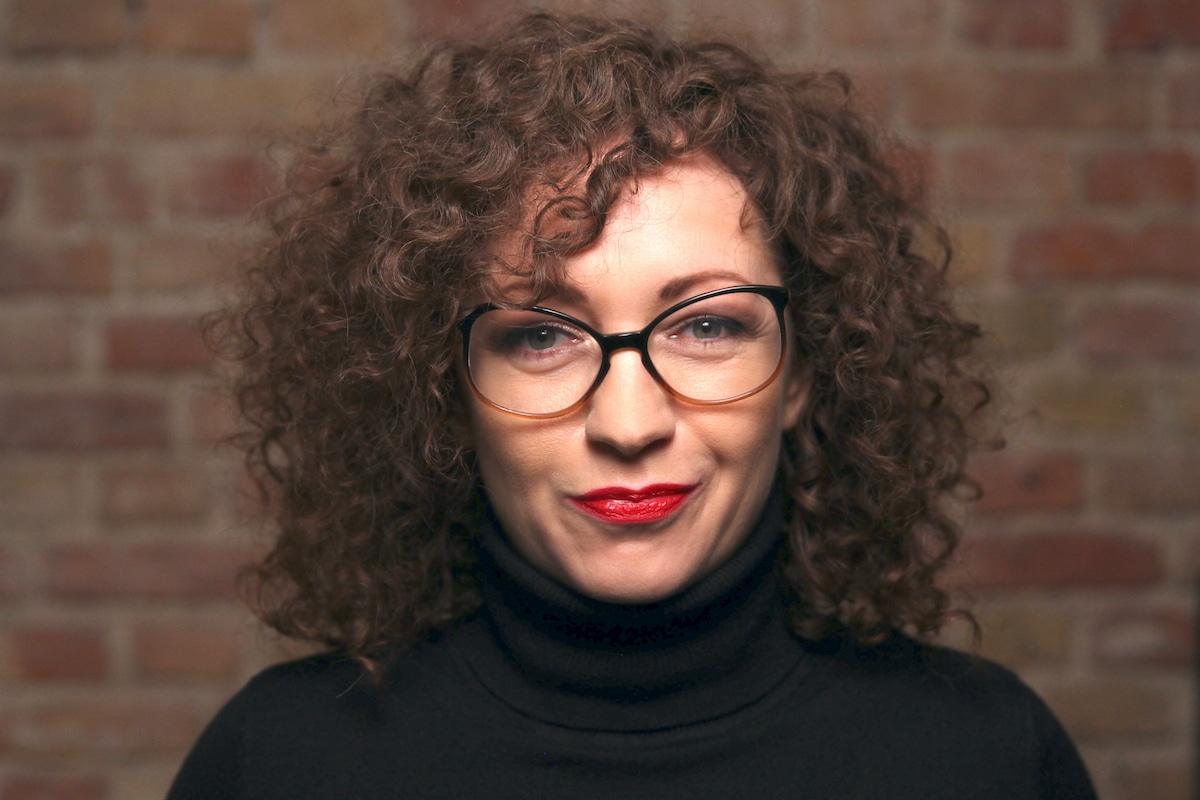We introduce the winners of the 30th German Camera Prize (7)
, March 2, 2021
Our series with the winners of the 30th German Camera Prize continues with Janine Dauterich. She was awarded for the best editing in a documentary.
–
–
–
–
Janine Dauterich was born in Hessen in 1978 and completed her degree in montage in 2010 at what is now the Film University Babelsberg Konrad Wolf. Since then she has been working internationally in the field of feature, documentary, music, dance and art film. For “The War on My Phone” (2018), the continuation of the multiple award-winning documentary “#MyEscape” (2016), Janine Dauterich was nominated for the German Camera Prize 2019 in the category of documentary editing.
I was really happy when I saw in your work photo that there is still someone in the world who organizes their editing with post-it notes.
Post-its, index cards, colorful sticky notes, I’ve got a whole collection here. Depending on the film, each protagonist or each theme has its own color, which I then use in the Avid. This gives a good overview of the material, especially at the beginning of a work, and later in Avid of lengths and dramaturgy.
What did it mean for you to receive the German Camera Award for the best editing of a documentary?
That was a big surprise at first. I didn’t register “Beethoven’s Ninth: Symphony for the World” myself, the production company did that in consultation with Deutsche Welle. I was very happy about the award, especially because working on documentary films for TV doesn’t get too much recognition. There are a lot of interested viewers, only the broadcast dates on television are almost always late in the evening or at night.
–
The editing of the film took almost half a year. How did the collaboration with the director Christian Berger look like over the course of this time?
I work on long projects more often. Before Beethoven, I spent a year and a half working on a documentary with interruptions. It is always exciting to deal with a topic so intensively for a long time. Working with Christian is very relaxed and productive. We have already done six projects together, we know our way of working well and he gives me a lot of leeway. He has a lot of confidence in that.
Apparently there were several terabytes of material. How did you handle this amount?
As is often the case nowadays, it was really a lot, shot in eight countries with sometimes three cameras, plus archive material. Christian prepares himself very well, looks at all of the material, takes notes, goes through the interview transcriptions and creates a rough schedule of how the film could work. Then we sift together, with Beethoven that was about eight days. We scroll through the days of shooting, sort a selection according to topics in collective sequences. With a TV project, I wouldn’t have the time to go through the entire material right from the start.
So do you rely on the director’s preselection?
I first go through this pre-selection with Christian, as a suggestion from him. That gives us a good overview. After that, he leaves me alone when it comes to editing the scenes. Of course I go back to the material and see if there is anything else there. However, the approach to material can vary from director to director.
In your thank you video at the online award ceremony, you mention “long stands and no effects” as a stylistic device when editing this project and that you would have followed your editing instructor here. How did your studies influence you?
Long standing pictures are more of a personal taste, just cutting for the sake of cutting is not my thing. I learned from Babelsberg, among others, that everything doesn’t always have to be cut smoothly. The study of assembly is very open there. It’s about montage theory, discussing films, but also about broadening your horizons, i.e. watching films that you don’t often see on television or in big cinemas. Experimental films are a hobbyhorse of Gerhard Schumm. What do you like, what don’t, what methods do these films use and what do they trigger? Thinking about it opened up a horizon and that is what I took away from Gerhard Schumm, Gisela Schulz and many other lecturers.
The jury mentioned in its reasoning that you had made Beethoven’s coming deafness “tonally tangible”. What’s it all about?
One of the seven stories in the film accompanies Paul Whittaker, a deaf musician from England who, together with an orchestra, offers music workshops for hearing impaired children around the world; in the film it was in Barcelona. The children are told how instruments produce sound and are allowed to play them themselves. They feel the vibrations and that a cello feels different to a violin. It’s hard to imagine. I would have liked to have had this story in the film longer because it is very emotional and something I had no contact with before.
We then considered how we could convey the children’s experience well. Some have implants or can still perceive low tones, so we didn’t want to just turn the tone off. On the first Barcelona scene in the film, I tried different options. It now starts with a normal tone, but it gets quieter and quieter until only the noises of the instruments can be heard muffled. You can be more courageous with movies, but you don’t want to scare viewers away with a TV production. Nobody should think it was a technical error. In later scenes with Paul and the hearing impaired children, together with Cornelius Rapp, our mixing master, we found a good mix between muffled instrument sounds and the original sound. [14206]
–
–
–
–
–
–
–

